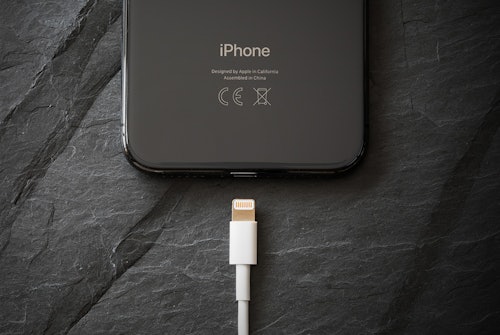- What To Do If You Receive a Scam Call, Email, or Text
- 4 Ways to Protect Yourself From Social Security Scams
- Red Flags of Social Security Scams
- What To Do If You Fall for Social Security Scams
- Common Social Security Scams To Be Aware Of
- Frequently Asked Questions
The Social Security Administration and those receiving Social Security benefits are common targets for scammers. By impersonating a representative of this government agency, scammers can create fear or a sense of urgency in their victims. And with one in six residents of the United States receiving Social Security benefits, scammers have many to choose from. Here's how to beat Social Security scams and stay safe.
What To Do If You Receive a Scam Call, Email, or Text
The best thing you can do if you receive some sort of scam message claiming to be from the Social Security Administration is to not interact with the scammer at all.
- If you receive a call that doesn't seem legitimate, hang up immediately. If they left a number for you to call back, check to see if it's the legitimate SSA phone number.
- If you receive a text or email, do not respond to it, click on any included links, or dial any numbers you are asked to call.
- Report the call, email, or text to the Social Security Administration.
4 Ways to Protect Yourself From Social Security Scams
Here are a few ways you can protect yourself when it comes to Social Security scams.
1. Install a Spam Blocker on Your Phone
Many scam text messages and phone calls are initiated by robocallers—software that cycles through thousands of phone numbers and usually displays a spoofed phone number.
Multiple cell phone apps exist to block these calls and make sure you never receive them. Some may come with your cell phone service or your phone (e.g., T-Mobile's Scam Shield).
If any of these Social Security scam calls or messages slip through, make sure to report them. Once you report a new scam, it will be investigated and added to the system to be blocked.
2. Create a My Social Security Account
Creating a My Social Security account will help keep your information secure and identify any suspicious activity. You can also set up two-factor authentication, so your account is even more secure. Once your account is set up, you can confirm whether Social Security letters, calls, or texts are legit by logging in and seeing if the same message was posted to your account.
This can help you avoid Social Security scams because you can log into your account to verify if there are any issues with your account.
3. Add a Direct Deposit Fraud Prevention Block to Your Social Security Account
Adding this type of block to your Social Security account will prevent anyone from signing up for a direct deposit or changing your direct deposit details online. Once you set this up, you can only update your direct deposit information by visiting a local Social Security branch in person—making it virtually impossible for scammers to redirect your payments. Be sure to bring an official government ID when you do.
Although this may seem like an inconvenient way to update your payment information, it will safeguard your payments from getting into the wrong hands.
4. Add an eServices Block to Your Social Security Account
Adding an eServices block to your Social Security account will prevent anyone from seeing or modifying any personal information on your account online, including yourself. Once a block is added, you will have to visit a local Social Security office in person with an official government ID to change your information.
Red Flags of Social Security Scams
The Social Security Administration may email or text you about available programs and services. But they will never ask you to call an unknown number in the message. Moreover, you will only get these emails or texts from Social Security if you opted in to receive them in one of these two ways:
- If you set up advanced security in your My Social Security account and receive a code to log in.
- If you subscribed to receive updates and notifications from Social Security by text and email.
None of these messages will include questions about your account or threaten you. They are automated messages.
How the SSA Contacts You
- By phone
- By mail
- By email (only if you’ve opted in)
- By text message (only if you’ve opted in)
Scammers most commonly call you, but there are signs to look out for that should help you identify a scammer. You can be sure you're speaking to a scammer if the "SSA representative" ever:
- Threatens you with arrest or other serious punishment
- Requires payment by prepaid debit card, wire transfer, mailing cash, internet currency, retail gift cards, or another non-conventional method
- Threatens to suspend your Social Security number
- Demands immediate payment
The Social Security Administration may also send you letters in the mail, but such letters will have a heading that includes the agency name, the name of the Social Security program, and the type of notice. The letter will also tell you how to contact them, and you can double-check that information at the official Social Security Administration website.
Social Security Administration
It's important to verify links and contact details to beat imposters.
What To Do If You Fall for Social Security Scams
If you fall for a Social Security scam, here are the steps you should take:
- If you have given financial information on a web form or over the phone, you need to:
- Contact the affected financial institution
- Notify them of the fraudulent activity
- Have the institution shut down your card(s) or your account
- Report Social Security scams to the Federal Trade Commission.
- Report the scam to the SSA Office of Inspector General Fraud.
- You may also want to place a fraud alert on your credit reports to make it harder for a scammer to open new accounts using your Social Security number if you exposed it in any manner.
Common Social Security Scams To Be Aware Of
Social Security scammers may contact you via a phone call, a text message, an email, or even a letter in the mail. The scams are similar, even though the method used to reach you may differ. The scammer's goal is to gain access to your Social Security number or financial information.
Extra Benefits
This type of scam tries to appeal to greed. The scammer thinks you will overlook the fact that the SSA will never ask for a payment to get more benefits. The scammer will say you can get more benefits, but you have to pay a convenience fee, or you can only receive the payment by direct deposit.
Benefits Being Canceled
This type of scam uses fear. The scammer will demand a payment to stop your benefits from being canceled. Just remember that the Social Security Administration will never ask for payment to extend your benefits.
Scheduled Telephone Appointment
This scam will claim that you have a scheduled Social Security telephone appointment and provide a phone number you must call. Once you are on the phone, they will use various tactics to access your sensitive information.
Suspension of your Social Security Number
This is another scam that uses a threat to trick you into overlooking the warning signs. The scammer will claim they will suspend your Social Security number (SSN) unless you take an action that exposes personal or financial information. Remember, your SSN can't be suspended, and the Social Security Administration will never threaten to do so.
Compromised Social Security Number
This is another Social Security scam that uses fear. You may be directed to an automated telephone system to enter financial details or your Social Security number to “secure your Social Security account.” But this is not what is happening. Your account is secure until your details are entered and in the hands of the scammer.
There's a Case Against Your Social Security Number
In yet another scam using fear, the scammer claims that there is a case against you. They threaten that you will be arrested or taken to court unless you call back. However, the Social Security Administration will never use threats, and the phone number they give you will go straight to the scammer.











Comments